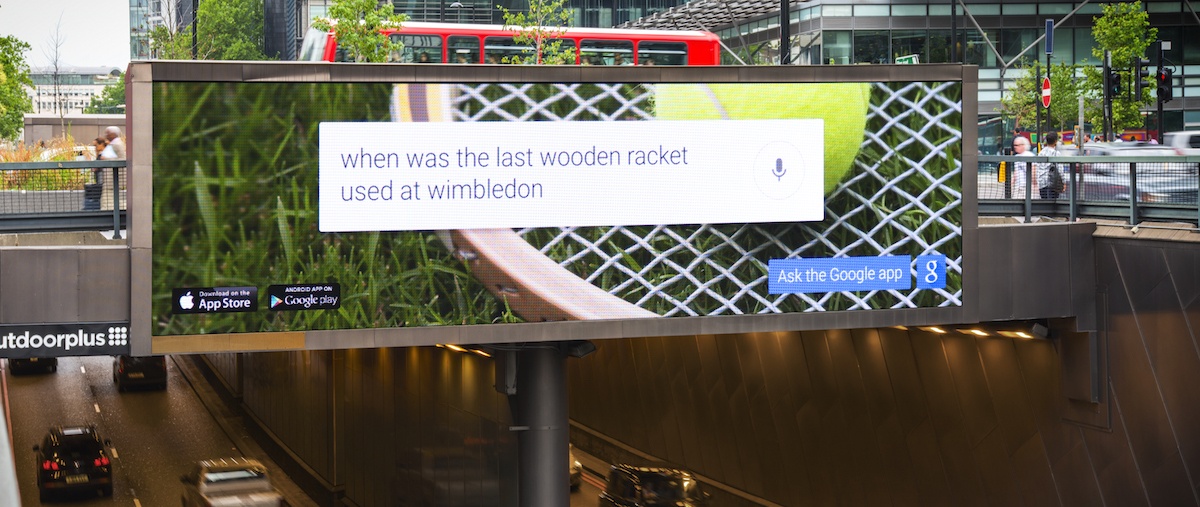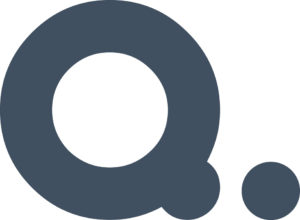
Grand Visual Spins Off QDOT; Aims To Ease Managing DOOH Campaigns Across Multiple Ad Networks
April 26, 2017 by Dave Haynes
The UK-based digital OOH creative production house Grand Visual has long been involved on the technical side of that business, and has now gone a lot deeper by formally spinning off an ad technology company that’s meant to make it easier to manage, measure and deliver dynamic ad campaigns across multiple ad networks.
 The company says QDOT is built on established ad serving technology and integrated with all major digital OOH network providers. QDOT, says a press release, “addresses some of the complexities inherent in the diverse digital OOH eco-system, enabling advertisers and agencies to simply and efficiently manage, measure and deliver smarter digital OOH campaigns at scale.”
The company says QDOT is built on established ad serving technology and integrated with all major digital OOH network providers. QDOT, says a press release, “addresses some of the complexities inherent in the diverse digital OOH eco-system, enabling advertisers and agencies to simply and efficiently manage, measure and deliver smarter digital OOH campaigns at scale.”
In essence, the company had tech they developed in working with their clients, and realized/decided there was an opportunity to make it available to more than just their existing client base.
QDOT consolidates well established ad-serving systems that have been delivering results for Grand Visual clients for over six years and are trusted by some of the world’s largest OOH media buyers including Talon, Kinetic, Rapport and Outdoor Media Group. QDOT also connects and serves content to media owners through the growing number of supply side, out of home automated buying platforms, future proofing the out of home industry with programmatic ready creative fulfilment systems.
With offices in London and New York, QDOT technology has already delivered over 1,600 campaigns, across 40 networks and 38 countries, for world leading brands such as Google, Coca-Cola, Warner Bros, Amazon, Virgin, McDonald’s, Facebook, Sky and Disney.
QDOT is led by Ben Putland, who will also continue his role as COO of Grand Visual New York. Putland will report into QDOT’s founder, and Grand Visual CEO Neil Morris. Key staff within Grand Visual dedicated to the platforms will transfer across, and the team will build out over the next 12 months.
Putland likens this to the logistics business: “DOOH is now a global medium and requires a global delivery system to accelerate its adoption as a dynamic, data-driven and scalable medium with seamless workflows. QDOT adds creative testing, site selection and accountability into the fold, creating a compelling one stop shop for brands and businesses looking for a trusted, reliable content delivery partner in a programmatic world.”
“The DOOH market is now at a size and maturity where DOOH media will be planned and bought locally, with creative concepts, production and distribution that are global,” adds Morris. “QDOT is the result of years of development, research and collaboration. It’s launch as a standalone company is not just the product of growth, the industry is entering a new era, and we need to be focused on the tools and systems required to facilitate the medium’s true creative potential as a digitally connected, data rich, intrinsic part of the smart city landscape.”
The platform rolls up existing technologies developed over the years by Grand Visual:
- OpenLoop – Intelligent management and dynamic optimisation of campaign messaging across networks from a single dashboard (reactive, feeds & social)
- FileDrive – Dedicated to the quality assurance, distribution, and auditing of DOOH creative that in turn accelerates the path from creative producers to media owners.
- PlayTrack – Tracking and reporting of DOOH campaigns including play-outs, interactions and other specific campaign metrics.
- SitePick – Select, group and plan DOOH by specific attributes. SitePick features over 95% of the UK market and 80% of screens within the US.
Right now, this is largely a managed service, but Putland says this will evolve in 2017 to include automation and self-serve capabilities.
I followed up from the release with a couple of questions for Putland:
Are you doing this because increased programmatic buying creates some problems in creating a handshake and “logistics/delivery” system for bought media to find its way to the right screens at right time, etc?
Yes, exactly. As a global medium with a vast array of inventory available, PlayTrack – our real-time reporting and analytics platform – can aggregate play-out data and provide an independent audit trail across multiple media owners for specialist exchanges.
The need for comprehensive ad verification becomes even more important when running dynamic campaigns, and advertisers need to know that the right creative played in the right place at the right time. PlayTrack provides the level of transparency and accountability needed for the programmatic future of digital OOH.
Is the pitch in part that, “Sure there are other ways to get ads to screens – like BroadSign, Ayuda, etc …” – but this is different, and more? If so, how?
It’s fine to use a single piece of signage software if your campaign is running on a single digital OOH network, but for well-planned national or international digital OOH campaigns running across multiple networks, you need platforms that can handle the sheer volume of multi-network copy.
FileDrive is our web-based workflow tool for the management and trafficking of digital OOH campaigns at scale. FileDrive simplifies the execution of digital OOH campaigns that span multiple vendors and markets, by addressing the nuances and complexities of this diverse and silo’d digital OOH media landscape, through automated quality assurance, streamlined approval processes, and accelerated campaign time-to-market.
Another key differentiator for QDOT is OpenLoop, the dynamic content management and delivery platform for digital OOH. OpenLoop allows advertisers to centrally manage, publish, and update campaigns on-the-go, from a single dashboard, without the need to re-schedule ads with each individual media owner.
Ultimately, QDOT is aiming to remove the barriers that advertisers face when running large-scale digital OOH campaigns, whilst providing accountability and trust through our live reporting and analytics tools – a powerful combination that we hope will be beneficial for the medium, as a whole.
You can hear more about Grand Visual and its approach to creative and data-driven digital OOH advertising in this recent 16:9 Podcast with Co-Founder Dan Dawson:



Leave a comment